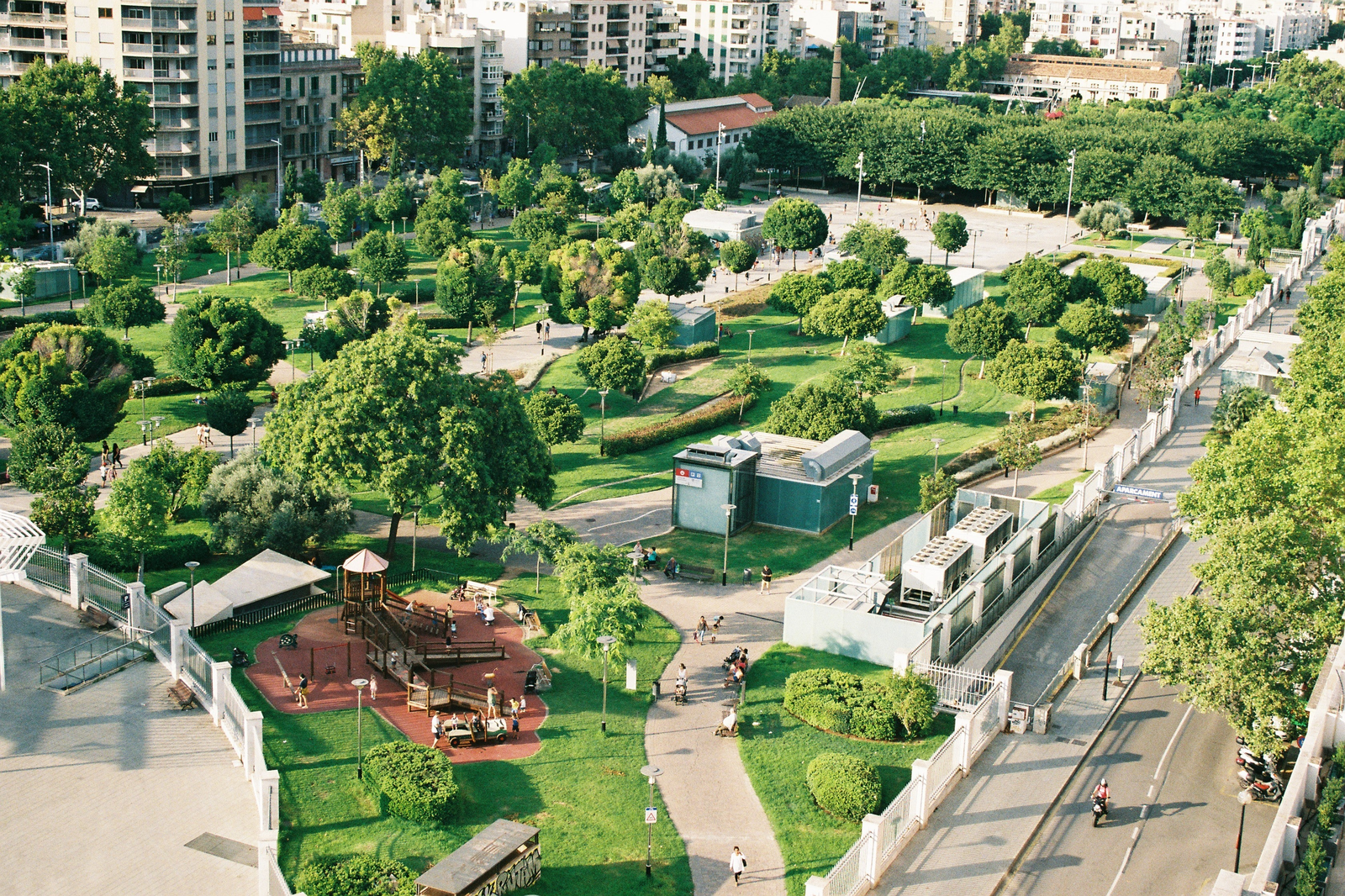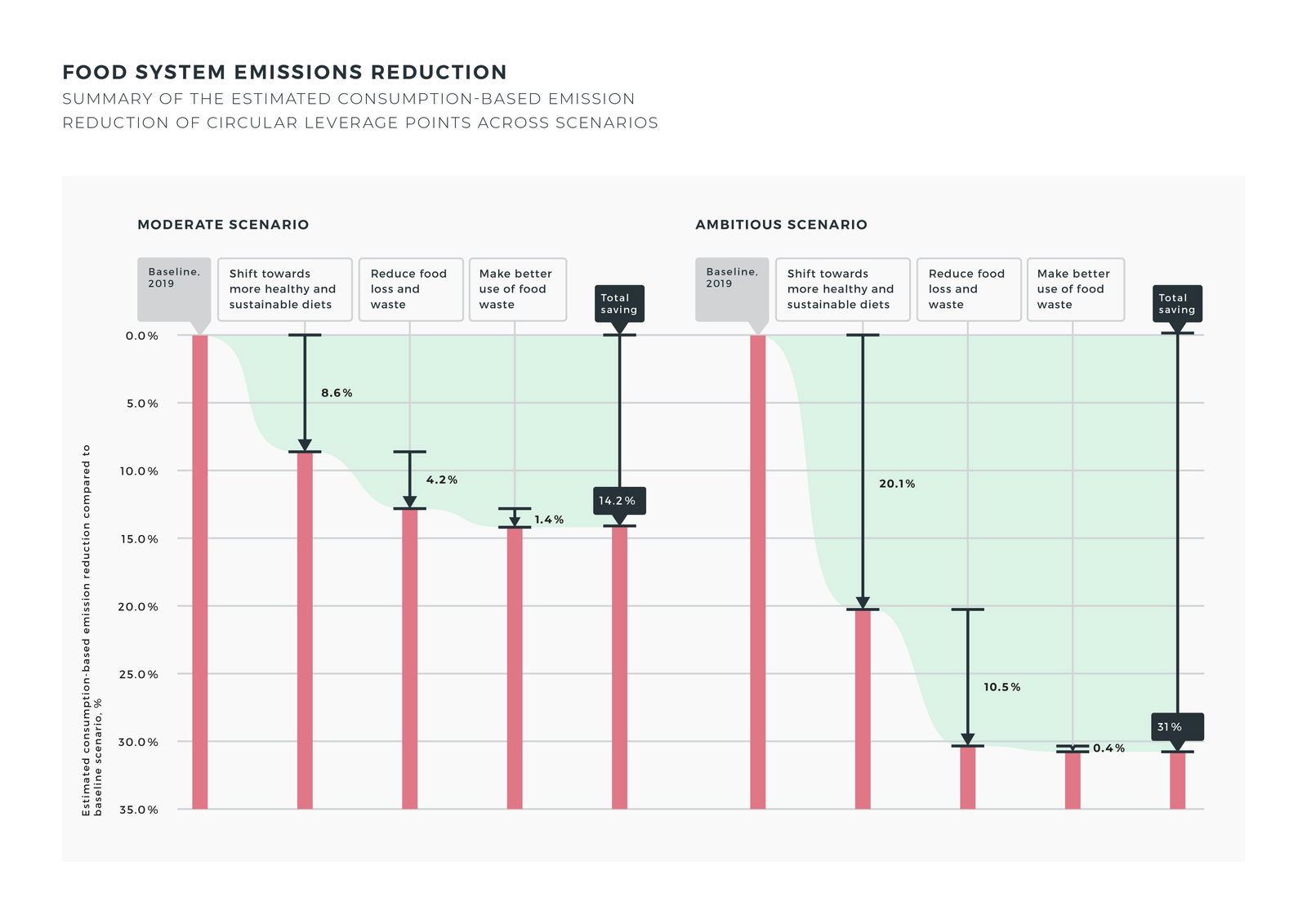As cities race to net-zero, the Circle Carbon Scan will provide new avenues for impact


· 8 min read
Circular economy strategies will be crucial for cities looking to scale their impact and reach net-zero. While going circular in a linear world can be challenging, the Circle Carbon Scan can help: this new tool, developed by Amsterdam-based impact organisation Circle Economy, helps cities link material use to emissions for any sector—pinpointing exactly where change makers should focus their attention.
Our planet consumes incomprehensible volumes of resources: between two landmark climate conferences—Paris in 2015 and Glasgow in late 2021—we've extracted, processed and used more than half a trillion tonnes of materials. These materials—from minerals and metals to biomass and fossil fuels—are largely demanded by and ultimately used in cities, the world's activity hotspots. By 2050, it's expected that the world's urban areas will consume 90 billion tonnes of materials yearly, despite occupying just 2% of the planet's surface.
The consumption of finite resources is a serious issue—yet public discourse on the matter is underdeveloped. Now, climate breakdown—which represents just one of nine planetary boundaries—is front and centre on global agendas. But the link between resource use and climate impact is inextricable, although lesser-known: 70% of greenhouse gas emissions stem from material use and handling, and strategies that tackle how we use materials have the power to slash emissions by 39%. In reality, this would mean limiting warming to 1.5-degrees and preventing the worst climate disasters like floods, famines and extreme weather events. These powerful strategies go beyond the energy transition and are based on the circular economy: an economic system that aims to design out waste, keep materials in products in use for as long as possible, optimise high-value cycling and regenerate natural systems.
'We point very clearly to the cities of the world as a key place for mobilisation,' said IPCC co-chair Debra Roberts, commenting on the latest IPCC report launched February 2022. Cities are epicentres of consumption—as well as innovation, infrastructure, investment and culture. They also hold most of the world's people, with over two-thirds expected to live in urban areas by 2050. More agile than national governments, city-level actors are well-poised to drive the transition to a circular economy: and it's critical that they do so, as research shows that cities will bear the brunt of negative climate impacts. It's, therefore, crucial that cities around the globe are equipped with the knowledge necessary to reach our end goal: an ecologically safe and socially just operating space for humanity. The circular economy is our means to this end.

Amsterdam-based impact organisation Circle Economy is committed to helping cities use the circular economy to combat environmental degradation. For the first time, it's diving into combatting one of cities' biggest climate challenges—consumption—through the Circle Carbon Scan, which links material consumption to emissions for any supply chain in any city. The Carbon Scan pinpoints where emissions occur throughout a supply chain, allowing city-level decision makers to understand how they can use the circular economy to make impactful interventions. Crucially, it takes a consumption-based approach: it accounts for emissions generated elsewhere and not those from within city boundaries. Why is this important? Wealthy 'consumer cities' like London, Paris and New York have already succeeded in cutting their locally-generated emissions, largely by outsourcing production to poorer countries which have long been feeling the impact. Including the impacts of the consumption of goods and services produced abroad means that these cities have among the highest per capita emissions globally—knowing this is critical to taking action in the right way. This is how the Carbon Scan came to be.
Circle Economy's Cities Lead, Jordi Pascual Torner, along with Max Russell and Alex Collorichio, kicked off the Carbon Scan's development in 2021. To date, no other method exists that's so flexible and far reaching in its approach—nor one that links material use to emissions in cities. Following its pilot for London's food supply chain, plans to scale are flowing fast—up next is the city's textiles supply chain. It's not without challenges (data availability can be tricky) but Jordi is confident in the Carbon Scan's ability to tackle cities' consumption-based emissions: 'we've aimed to create a method that uses and processes data in such a way that it can be replicable—but also still meaningful for different sectors and contexts,' he notes.
For its pilot, the Carbon Scan was applied to one of the most impactful supply chains in one of the world's most notable cities: the food system in London. It's analytical framework mapped material flows and tied them to consumption-based emissions in the city's food system, following how London's 6.3 million tonnes of food was produced, consumed and eventually disposed of—if not eaten. The Carbon Scan was able to trace that the majority of emissions—around three-quarters—are embodied in food itself and released on-farm, largely beyond city borders. Highly emissions-intensive foods—like meat and dairy—featured high on the menu, contributing nearly half of emissions while representing less than one-quarter of the food consumed. What's more, a huge portion of its 6.3 million tonnes of supply goes to waste: more than 1.4 million tonnes of food are wasted or lost at various stages along the supply chain yearly. Through eating more healthy, sustainable diets, cutting food loss and waste, and putting waste to better use—all practicable options that will also bring a range of health and social benefits—impacts could be huge: a cut in food-related consumption-based emissions of as much as 31%.

It's not easy going circular in our currently very linear world, where extraction is par for the course and waste is treated as an afterthought. It can be challenging to know where to start, especially given supply chains' complexity in a globalised world. The Circle Carbon Scan provides a starting point—and highlights potential results. We know what London could do by overhauling its food system: boosting fruit and veggie consumption while cutting down on meat, preventing avoidable food waste through redistribution and use in animal feed and scaling anaerobic digestion to create biofuels and slash fossil fuel dependence. And this has already borne fruit: ReLondon and the Mayor of London announced a number of commitments in response to the report—including an action plan to cut consumption-based emissions from the food supply chain through collaborations with caterers and suppliers. The analysis will also inform the Food Flagship Initiative, a multi-year programme spearheaded by ReLondon in collaboration with the Greater London Authority and Ellen MacArthur Foundation. The initiative aims to use the results of the Carbon Scan project to design high impact, data-driven policy interventions to cut the supply chain's massive emissions. Imagine this kind of action taking place for other impactful supply chains and sectors—from construction and infrastructure to electronics—in some of the world's largest metropolises. Research has shown that if cities went all-out—using strategies already in our arsenal to deliver deep cuts in emissions—we'd be well on our way to meeting the Paris Agreement's most crucial goals. Even more so, we know the added benefits of circular economy strategies, which can bring us far beyond the actions highlighted in countries' national climate commitments.

Cities are already leading the way: 10,000 of them have made strong commitments to reduce emissions drastically before 2050—and the Circle Carbon Scan can help them get there. But it's not up to them to act alone: without support from national governments and businesses, cities will only be able to achieve one-third of their net-zero targets. Why? Nations have the power to deliver true systems change through their political and legal mandates and businesses have the capacity to innovate and support the implementation of the circular interventions. Cities taking initial action will crucially need support, cooperation and collaboration from different stakeholders to drive circular initiatives forward. Tackling the climate crisis must be a joint effort—no one business, sector, city or nation can work alone.
'Consumption is a huge climate challenge for cities themselves—but the Carbon Scan can also help city change makers, citizens and businesses understand the importance of their actions in the global context. Systems change can start in the city,' Jordi explains. 'We're ambitious to continue replicating the exercise in other cities.'
Learn more
You can find Circle Economy's Circle Carbon Scan pilot here. Through the Scan, they:
For more information, please get in touch with jordi@circle-economy.com
This article was also published by the Green Industry Platform and circle economy. Future Thought Leaders is a democratic space presenting the thoughts and opinions of rising Energy & Sustainability writers, their opinions do not necessarily represent those of illuminem.
illuminem briefings

Climate Change · Environmental Sustainability
Gokul Shekar

Effects · Climate Change
illuminem briefings

Mitigation · Climate Change
Financial Times

Carbon Market · Public Governance
The Guardian

Climate Change · Agriculture
The Guardian

Agriculture · Climate Change